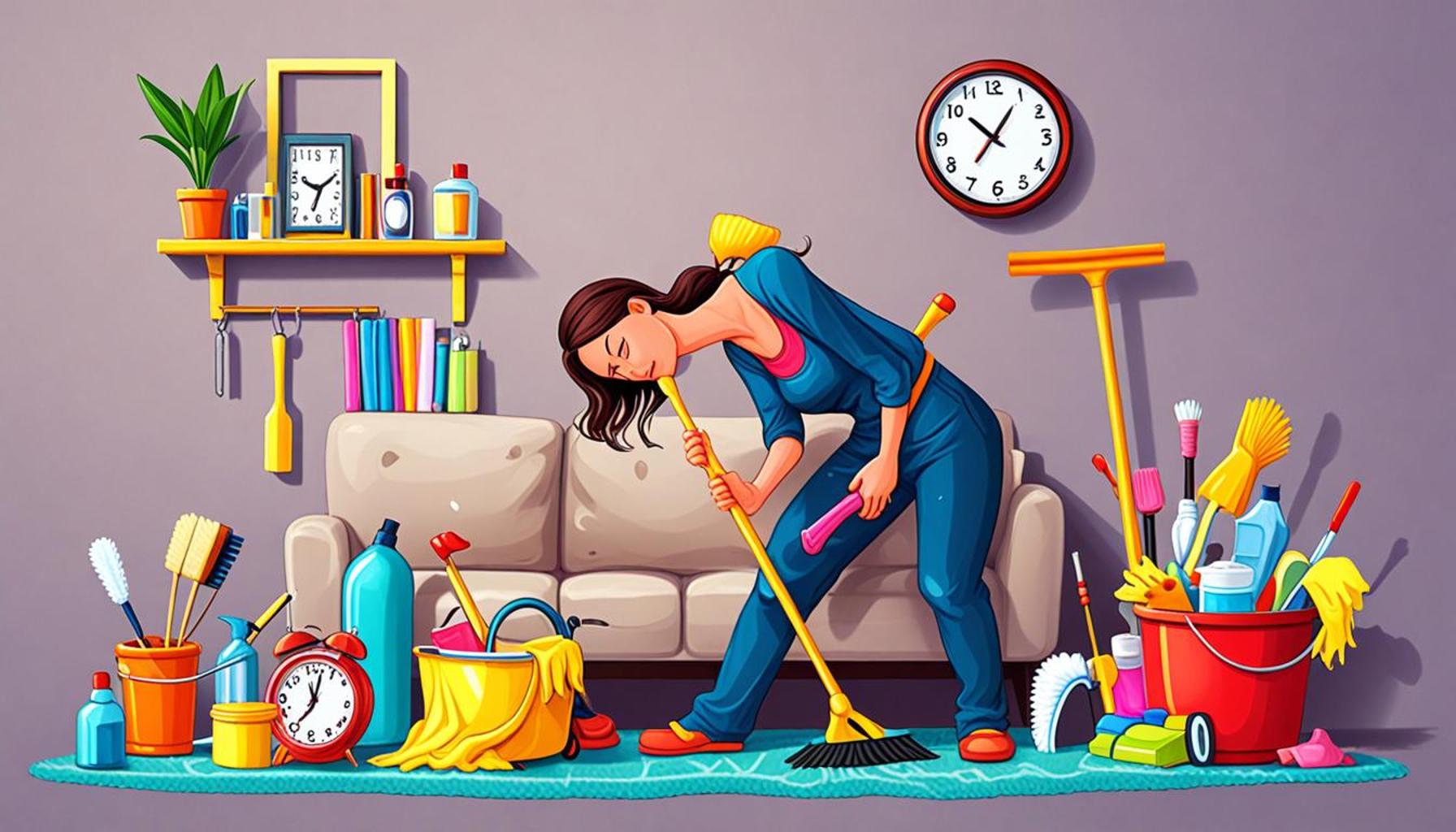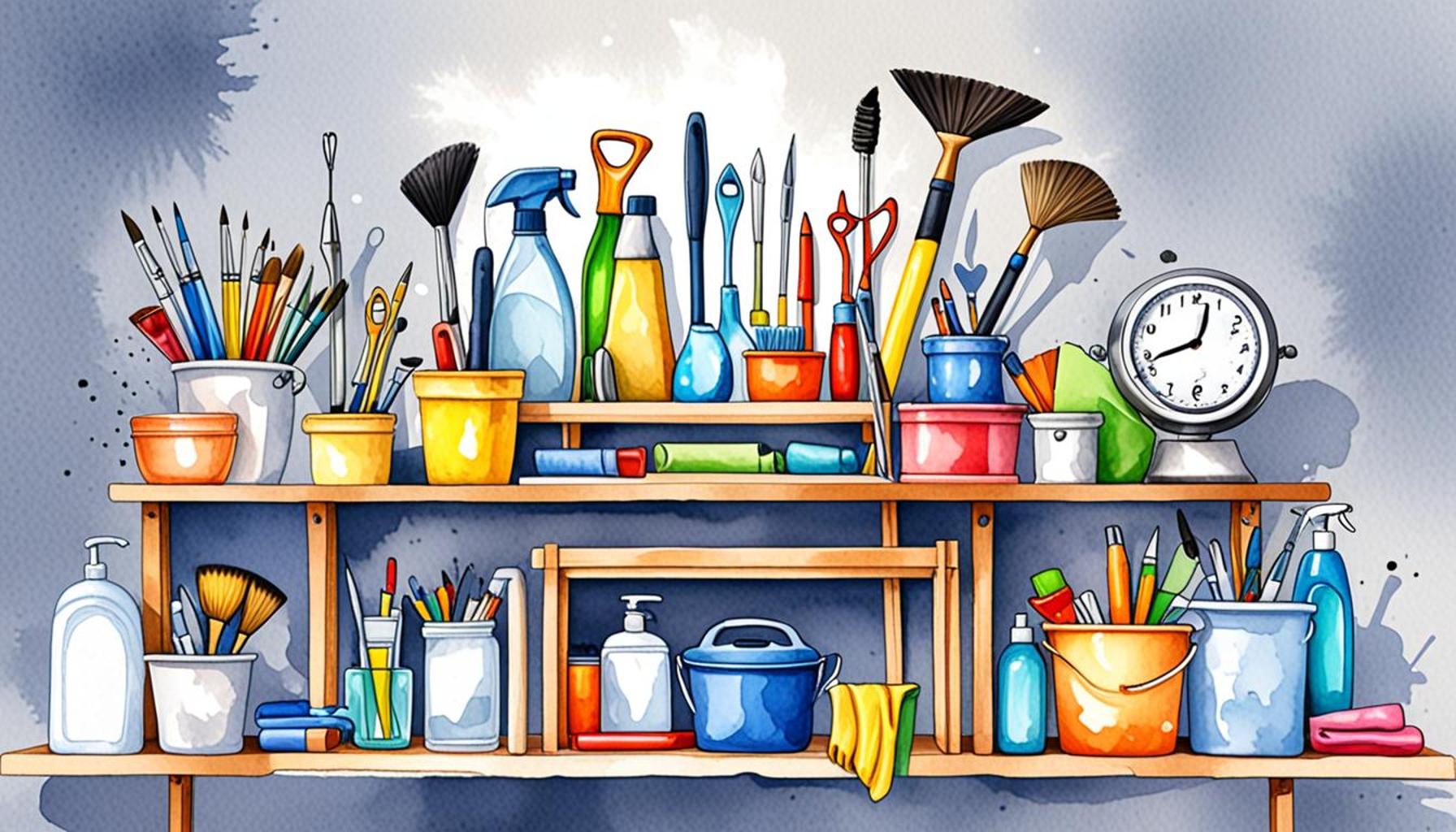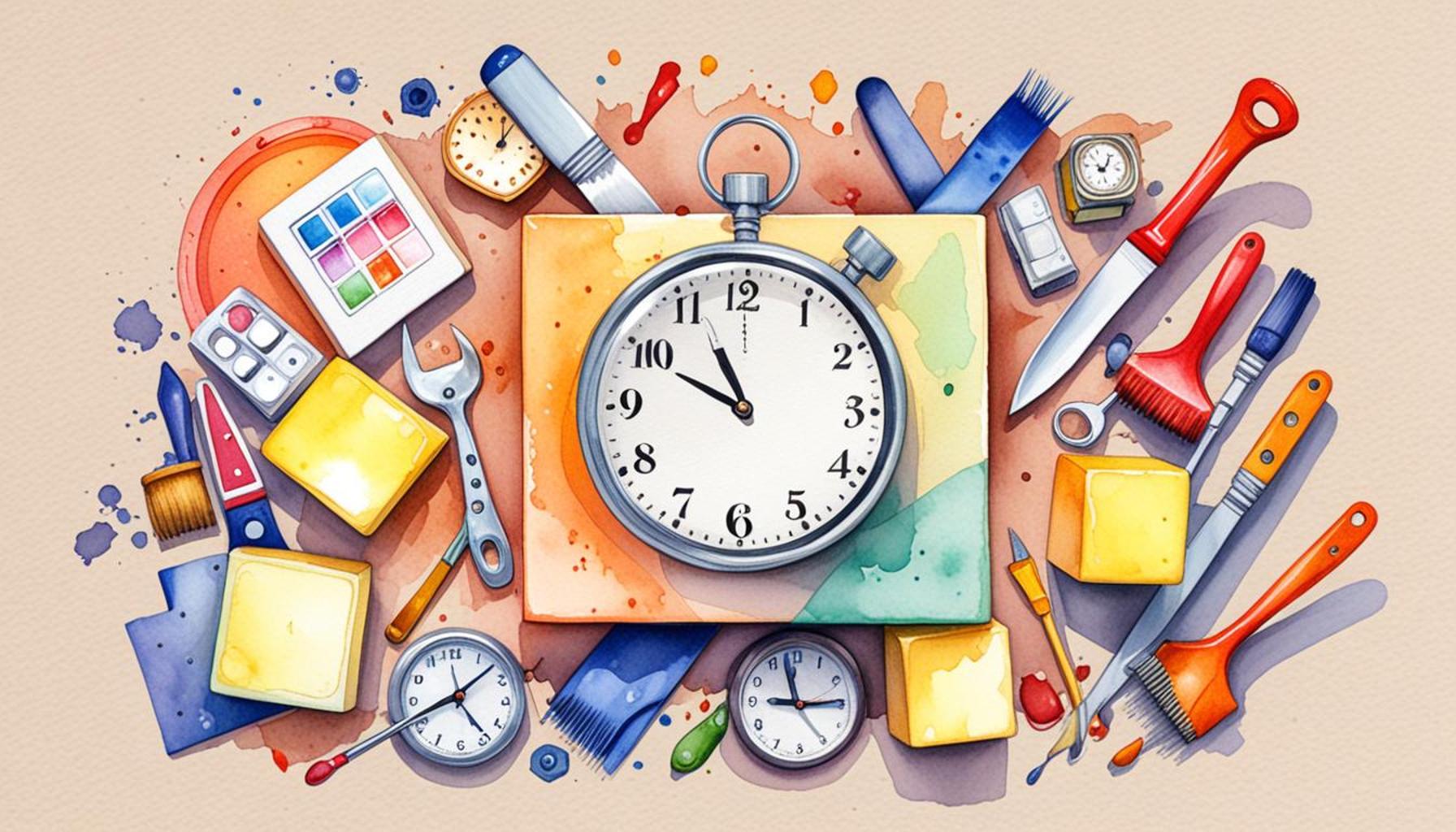The importance of prioritizing cleaning tasks: methods to identify what should be done first
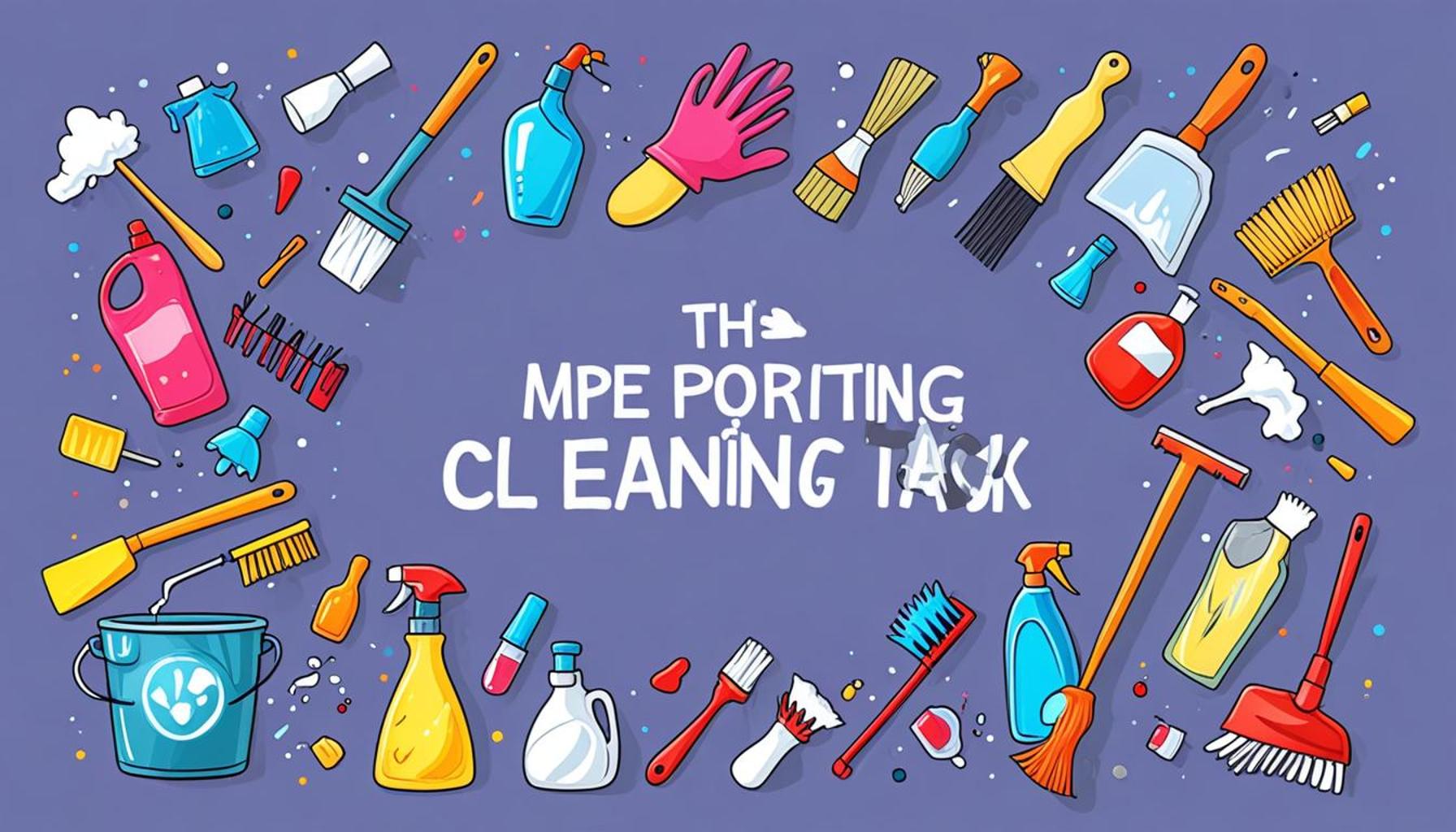
Understanding the Importance of Prioritizing Cleaning Tasks
In today’s fast-paced world, juggling numerous responsibilities can often leave household cleaning tasks feeling overwhelming. Prioritizing cleaning tasks is essential for maintaining a tidy space without burning out. Efficient methods to identify what should be done first can transform your cleaning routine, allowing you to maintain a home environment that is not only tidy but also welcoming.
Consider the following factors when determining cleaning priorities:
- Daily Needs: Focus on areas that impact daily life, such as kitchens and bathrooms. The kitchen, for instance, is the heart of the home where family meals are prepared. Keeping countertops clean and appliances organized can significantly enhance your cooking experience. Similarly, bathrooms are used multiple times a day, making regular cleaning of sinks and toilets imperative.
- Health Considerations: Address spaces that promote health, such as dust-prone areas or frequently used surfaces. High-touch areas like doorknobs, light switches, and remote controls are breeding grounds for germs; therefore, regular sanitization is crucial to preventing illness. For example, the Centers for Disease Control and Prevention (CDC) recommends cleaning these surfaces often, especially during cold and flu season.
- Visible Mess: Tackle messes that are most noticeable to create an immediate sense of cleanliness. Decluttering your living room, for instance, can have a big impact on the overall perception of your home. A tidy space significantly uplifts spirits, making it easier for you and your family to relax and enjoy your surroundings.
Implementing a structured approach to cleaning not only enhances the efficiency of your efforts but also reduces stress. By identifying key tasks, you can allocate your time effectively, ultimately leading to a more organized and pleasant living environment. This method can be especially beneficial for busy families or professionals who often feel stretched thin.
If you want to ensure your cleaning routine is effective, consider creating a cleaning schedule. Assign specific days for particular tasks—such as vacuuming on Wednesdays and dusting on Fridays—so that you systematically address areas of your home throughout the week. This strategy can alleviate the overwhelming feeling of needing to do everything at once.
In the following sections, we will explore effective methods and strategies for determining which cleaning tasks should take precedence. Whether you’re preparing for guests or simply maintaining your home, learning these techniques will empower you to take control of your cleaning routine. By prioritizing your tasks, you’ll not only save time but also create a healthier, happier home environment.
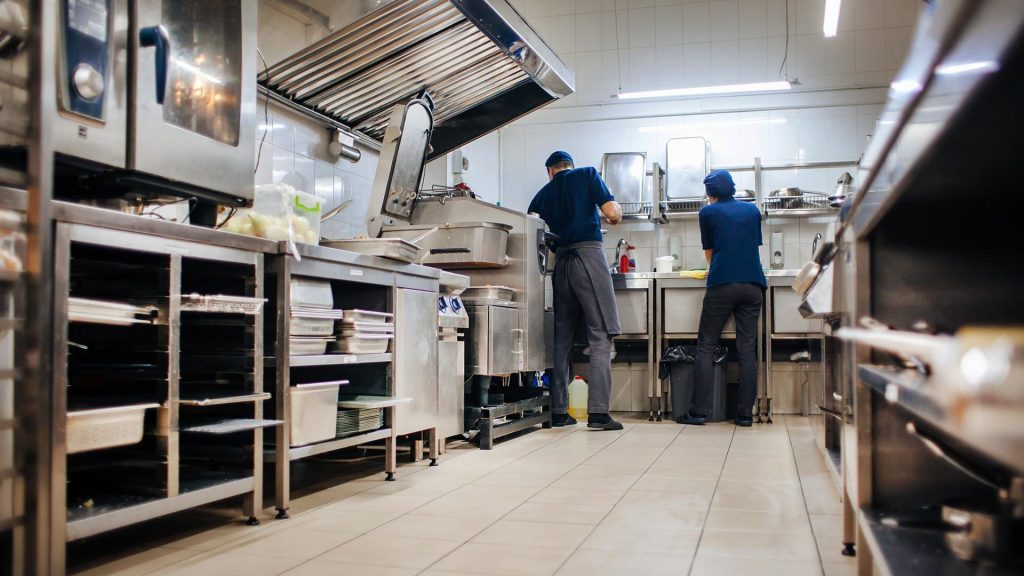
DIVE DEEPER: Click here to discover eco-friendly cleaning solutions
Effective Methods for Identifying Cleaning Priorities
To tackle the sometimes-daunting challenge of cleaning, implementing effective methods to identify priorities is key. By categorizing tasks and structuring your approach, you can create a more manageable routine that enhances productivity while minimizing stress. Below are several methods to help you establish which cleaning tasks should take precedence.
1. Assess Frequency of Use
One practical method is to assess how often different areas of your home are used. For example, areas such as the kitchen, bathroom, and living room are frequented daily, making them prime candidates for regular cleaning. Meanwhile, guest rooms or less-trafficked spaces might require less frequent attention. Prioritizing cleaning based on frequency allows you to keep the most-used areas consistently tidy, leading to a more inviting home overall.
2. Consider the Impact on Daily Life
Think critically about how cleanliness affects your daily routine. Impactful areas—those that significantly influence your lifestyle—should be prioritized. For example, let’s consider your workspace. In an age where more people are working from home, a clean desk can enhance focus and productivity. By giving precedence to spaces that improve your quality of life, you can create a more pleasant and efficient living and working environment.
3. Create a Cleaning Matrix
A cleaning matrix can be an excellent tool for visualizing your tasks. Start by listing all the cleaning tasks that need to be done, and then categorize them based on two criteria: importance and urgency. For instance, dishes piling up create an urgent need to clean that area, while dusting may not be as pressing but is still important for maintaining air quality. By mapping your tasks in this manner, you can prioritize effectively:
- High Importance & Urgent: Tasks that must be done immediately, such as cleaning a spill or sanitizing the bathroom.
- High Importance & Not Urgent: Maintenance tasks like deep cleaning the kitchen or organizing a closet.
- Low Importance & Urgent: Items that need immediate attention but don’t significantly affect your day-to-day life, such as removing visible dust.
- Low Importance & Not Urgent: Tasks that can be scheduled later, such as washing windows or organizing storage areas.
By using this cleaning matrix, you can focus on what truly needs to be addressed while fitting in tasks that can wait, thus ensuring a balanced approach to keeping your home clean.
Understanding how to effectively prioritize cleaning tasks is vital for both maintaining order and fostering a stress-free environment. By focusing on these methods, you can navigate your cleaning regimen with clarity and confidence, paving the way for an organized and welcoming home.
| Task Identification Method | Advantages |
|---|---|
| Urgency vs. Importance Matrix | Helps highlight crucial tasks needing immediate attention, ensuring that priority is given where it matters most. |
| Daily Checklists | Provides a structured way to approach tasks, improving productivity and reducing overwhelm. |
| Visual Cues | Ensures constant reminders of tasks to be done, making it easier to keep cleaning top of mind throughout the day. |
| Time Blocking | Allocates specific times for cleaning tasks, leading to increased efficiency and effectiveness in managing time. |
Understanding the significance of these methods will not only enhance a cleaner environment but will also foster a sense of discipline. The urgency vs. importance matrix is particularly vital as it diverts focus from less significant chores, ensuring that your time is spent wisely. Daily checklists can significantly diminish procrastination by outlining clear goals. When using visual cues, maintaining a clean space becomes a constant priority, leading to truly effective cleaning habits. Finally, time blocking enables you to prioritize cleaning without feeling burdened, facilitating a more streamlined approach to maintaining cleanliness. These methods are essential for developing an efficient cleaning routine that serves daily needs while also cultivating long-term habits. Dive deeper into each method and discover the one that resonates with your lifestyle best.
DISCOVER MORE: Click here for family organization tips
Strategies for Streamlining Your Cleaning Routine
In addition to assessing frequency of use and considering the impact on daily life, there are several other strategies for streamlining your cleaning routine that can help you identify priorities more effectively. By employing these strategies, you can enhance not only the cleanliness of your space but also the efficiency with which you maintain it.
4. Utilize the “Zone Cleaning” Method
The “zone cleaning” method divides your home into smaller sections or zones, allowing you to focus on one area at a time without feeling overwhelmed. This approach is particularly beneficial for larger homes. By tackling one zone, such as the kitchen on Monday and the living room on Tuesday, you turn cleaning into a manageable task. It also means you can rotate through the areas systematically, ensuring that every zone receives the attention it deserves at regular intervals. Implementing this method may help to alleviate feelings of dread associated with a more extensive cleaning session.
5. Establish a Cleaning Schedule
Creating a cleaning schedule is essential for consistency. Determine how often you will clean specific areas or perform particular tasks (daily, weekly, bi-weekly). This scheduling allows you to allocate time for high-priority cleaning tasks while also incorporating less urgent chores into your week. For instance, you might choose to vacuum and dust every Friday while deep cleaning bathrooms every second Saturday. By committing to a schedule, you foster accountability, making it less likely for chores to pile up and become overwhelming.
6. Involve the Family
Cleaning does not have to be a solitary task. Involving family members can alleviate the burden and allow for shared responsibilities. Hold a family meeting to discuss and divide cleaning tasks based on everyone’s schedules and preferences. Not only does this create a sense of teamwork, but it also highlights to everyone the importance of a clean living space. For instance, children can take on age-appropriate tasks such as picking up toys, while adults manage heavier responsibilities like vacuuming or mopping. This distribution ensures that priority cleaning tasks are tackled efficiently.
7. Focus on “Clean as You Go” Principles
Adopting a “clean as you go” mindset can significantly reduce the amount of time needed for cleaning altogether. This practice encourages individuals to clean small messes immediately, rather than allowing them to accumulate. For instance, washing dishes right after use or wiping down kitchen counters after meal preparations can keep spaces looking tidy longer and lessen the need for more intensive cleaning later on. This habit is particularly useful in high-traffic areas like the kitchen, where daily messes can become daunting if left unattended.
8. Leverage Technology and Cleaning Tools
Finally, consider leveraging technology to assist with your cleaning regimen. Smart home devices, such as robotic vacuum cleaners, can help maintain daily cleanliness with minimal effort on your part. Automated cleaning schedules can be set per your availability, ensuring that necessary tasks are completed regularly. Additionally, utilizing apps or reminders on your phone can help you stay on track with your cleaning routine, ensuring that no vital task is overlooked.
By integrating these strategies into your cleaning routine, you empower yourself to prioritize tasks effectively. Whether through the zone cleaning method or leveraging technology, adopting a systematic approach will undoubtedly enhance your cleaning efficiency, transforming your space into a more inviting and organized environment.
DISCOVER MORE: Click here to learn how to get your family organized
Conclusion
In conclusion, the significance of prioritizing cleaning tasks cannot be overstated, as it directly impacts not only the aesthetics and hygiene of your living space but also your overall well-being. A well-thought-out cleaning strategy allows you to tackle chores effectively, making the process less daunting and more manageable. By adopting practical methods such as zone cleaning, establishing a consistent cleaning schedule, and involving family members in the upkeep of your home, you foster a collaborative environment while sharing the responsibility of maintaining a clean space.
Additionally, incorporating the “clean as you go” mindset or leveraging technology can streamline your routine, helping you stay ahead of cleaning demands before they spiral out of control. As you develop a systematic approach to cleaning, you will find that each method offers unique advantages that cater to various lifestyles and living arrangements.
Ultimately, embracing these strategies not only leads to a cleaner living environment but also enhances productivity and mental clarity. By narrowing down what needs immediate attention, you optimize your time and energy, allowing for a more inviting home and a greater appreciation for your space. With this knowledge in hand, it’s time to redefine your cleaning approach, one priority at a time, moving towards a more organized and serene lifestyle.
